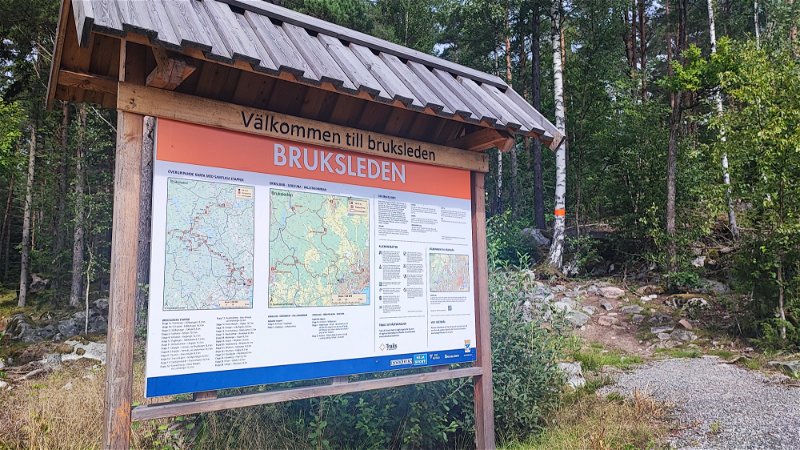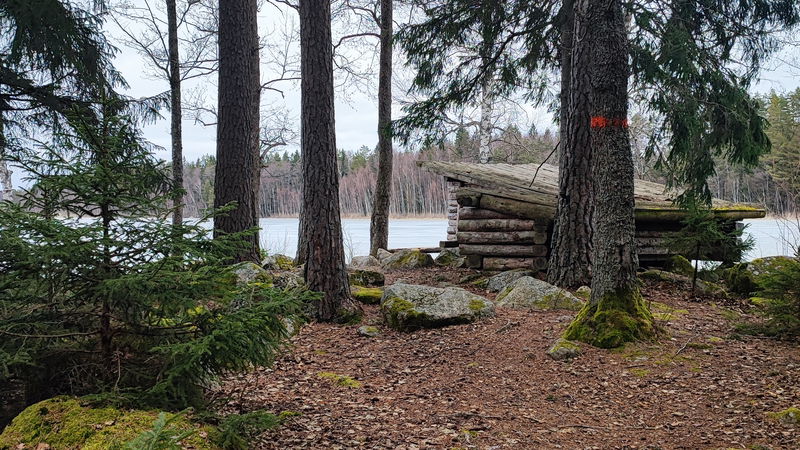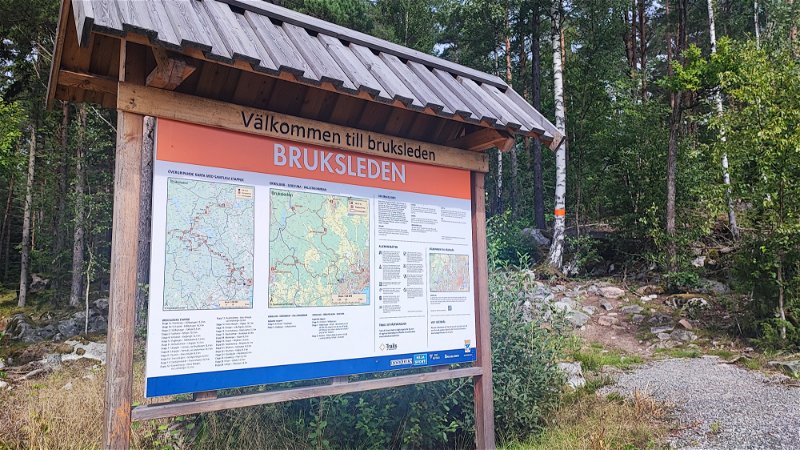The stage starts at Erikslund, west of the commercial area.
The first part of the stage is rocky and hilly in places. After less than a kilometer, marked with signs, the trail goes to the right. After another bit, the trail turns left onto the road for a bit and then goes back out on the path.
You now enter a landscape with varied woodland, fields and flourishing meadows.
After the shooting range at Skogstorp, the forest becomes denser and a few kilometers later the terrain begins to slope upwards. You have reached Skansberget. On top of the mountain are the remains of what was once a large and stately castle. Here you can take a break at the rest area in the middle of the castle ruins.
The rest of the stage up to the wind shelter at Vargberget you walk through varying and sometimes boulder-rich forest terrain. The path is relatively easy to walk. The shelter is located in a cozy little clearing in the forest.
RESTING PLACES
In the middle of the castle ruins on Skansberget there is a rest area with a fireplace and benches.
There is a shelter in a clearing in the forest at the Vargberget stage destination. The shelter has room for 6-8 people. It is difficult to set up a tent here as the ground is sloping and a bit rocky, but a place can be found.
VÄSTERÅS
In a bay on the northern shore of Lake Mälaren, the Svartån watercourse flows. People have lived around this area for a long time. We know that there were settlements here as early as 900 years ago, but probably also much earlier. The site's advantageous location on Lake Mälaren meant that the area was already an important trading center during the Viking Age. It even became so important that it was named Westraarus. Arus comes from the Old Swedish "aros", which means estuary, and the name westra was used to distinguish the site from the absolute center of the Svea Empire, Östra Aros, now Uppsala.
The settlement was granted a city charter around 1280 and today the city at the mouth of the Svartån is called Västerås. Iron and copper products from Bergslagen have been shipped out from here since the 13th century. During the 16th and 17th century boom in iron and copper exports, Västerås became Mälaren's leading city after Stockholm. Even today, the city has one of Sweden's most important inland ports.
In 1623, King Gustav II Adolf commissioned Bishop Johannes Rudbeckius to organize the activities around the founding of Sweden's first high school in Västerås. Rudbeckius is depicted in the form of a statue by Carl Milles. The statue is placed outside Västerås Cathedral.
In the 18th century, large parts of the old buildings were destroyed by a severe fire. Therefore, the cityscape today gives a modern impression. North of the cathedral is kyrkbacken, one of the few places in Västerås where old wooden houses still stand. Here there is an irregular street network of late medieval character.
Today Västerås is a modern industrial city with a diverse engineering industry. One of the companies that emerged in Västerås during industrialism in the 19th century was ASEA, today ABB, which dominates the business community.
WHERE TO STAY AND EAT
Västerås has many different accommodation and restaurant options Read more '
Directions
You can get to Erikslund by bus lines 3 and 14, the bus stop near the start of the stage is called Erikslund Västra.
You cannot get to the stage finish at Vargberget by car or by public transport.




